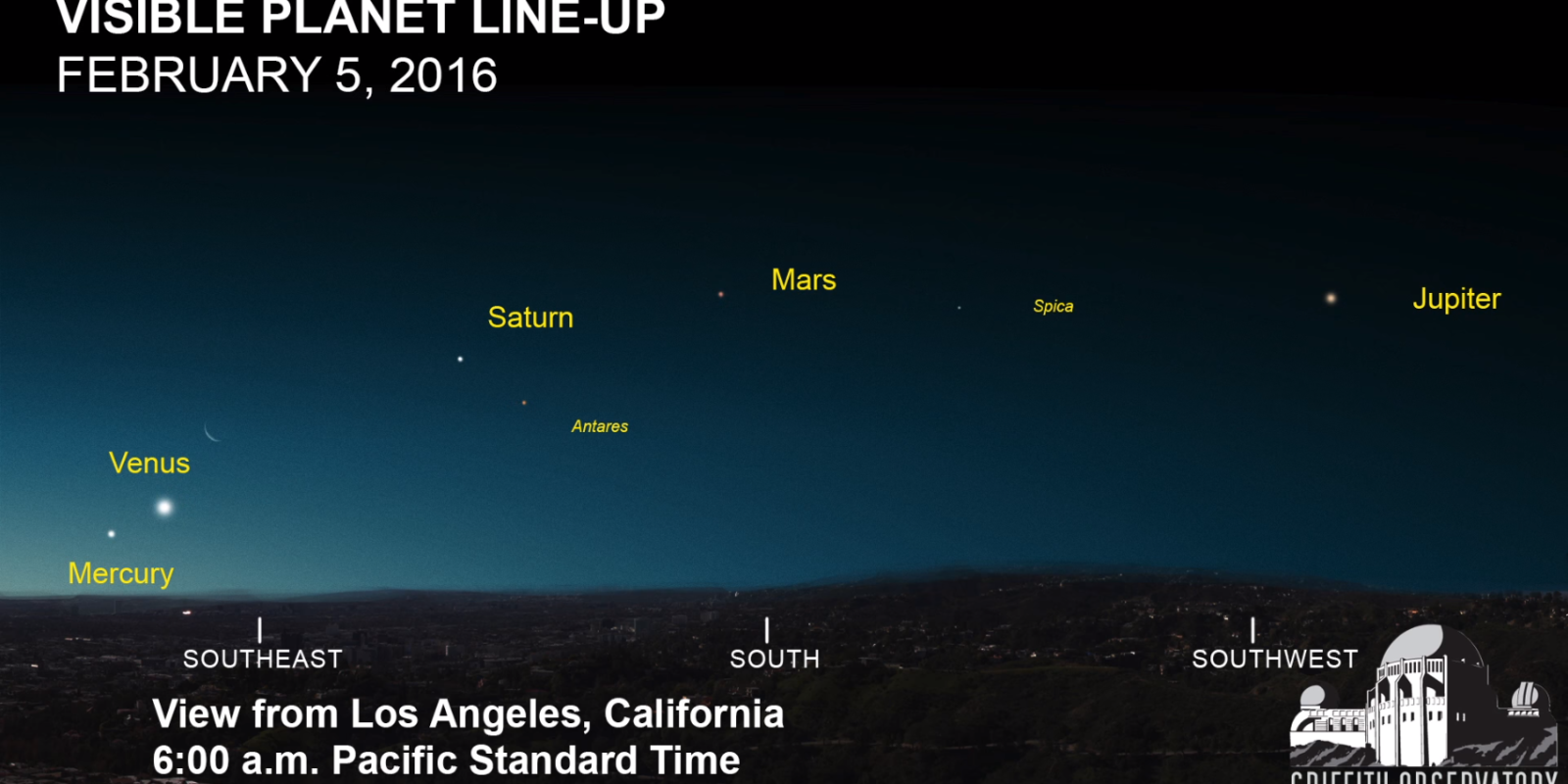Visible Planet Line-up, January – February, 2016
A line-up of all five bright planets is happening at dawn from mid-January through February 23, 2016

Upcoming Astronomical Observing at Griffith Observatory
All Five Naked-Eye Planets Line Up in the Morning Sky
This video shows the changing arrangement of the planets through the month of February.
A line-up of all five bright planets is happening at dawn from mid-January through February 23. Starting about 45 minutes before sunrise, the planets are visible in a line from low in the southeast across the southern part of the sky to high in the west-southwest. From southeast to west-southwest, or left to right, the planets that make up the line are Mercury, Venus, Saturn, Mars, and Jupiter. The brightest planet is Venus, and Jupiter is the second brightest. Saturn, Mars, and Mercury are fainter, but still as bright as bright stars, and they have their own distinctive colors. Mars is orange, Saturn is golden, and Mercury is white. Two stars, similar in brightness to the three fainter planets are also visible. The bright star Spica of the constellation Virgo the Maiden, glitters between Mars and Jupiter. The orange star Antares of the constellation Scorpius the Scorpion can be seen below Saturn. Notice how the ruddy hue of Antares matches that of Mars. In fact, the ancient name Antares means “the rival of Mars” in Greek.
The moon will join the line-up, from January 27 to February 7. It is in a waning gibbous phase when it shines near Jupiter on January 27, and is in its last quarter phase when it appears near Mars on January 31 and February 1. The moon is a waning crescent when it passes Saturn on February 3 and makes a tight triangle with Mercury and Venus on February 6. On February 7, the moon is barely above the horizon, but it is still in line with, and to the lower left of Venus and Mercury. On the following mornings, after the moon has left the scene, Mercury and Venus will appear to draw closer together until they reach their tightest grouping on February 11. Both appear lower and lower in the sky each subsequent morning, with Mercury descending faster and becoming overwhelmed by the bright light of dawn after February 23. On that day, the moon, full this time, will re-appear in the line just beyond Jupiter.
Because sunrise happens a little earlier each morning as the days draw closer to spring, the best time to view this group will gradually shift from 6:15 a.m. on January 23 to 6:05 a.m. on February 23.
This is the first time since January, 2005, that all five naked-eye planets have been visible together. Mercury and Venus will swing around the sun to line up with the other three planets again for a brief time after sunset in August 2016, but the grouping of planets will appear much more irregular. The next opportunity for a planet line-up will happen before sunrise in mid-July, 2020.